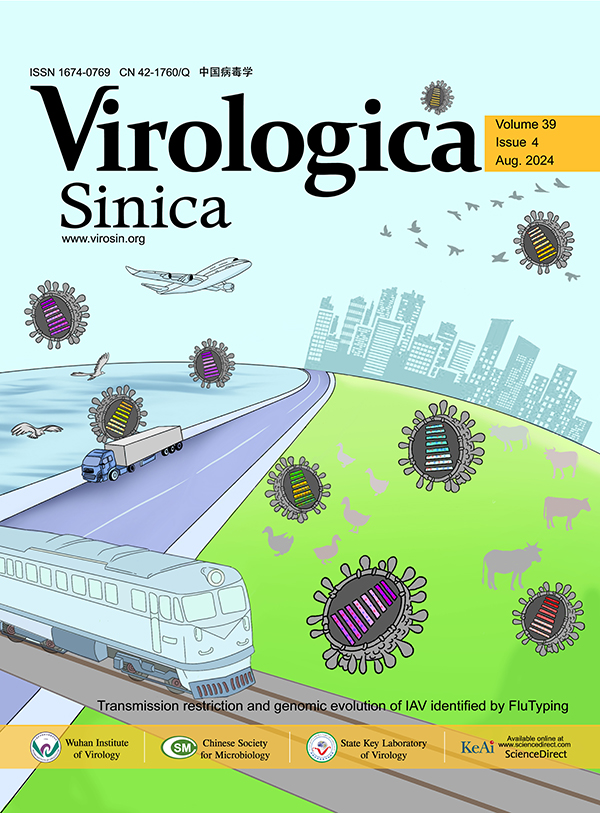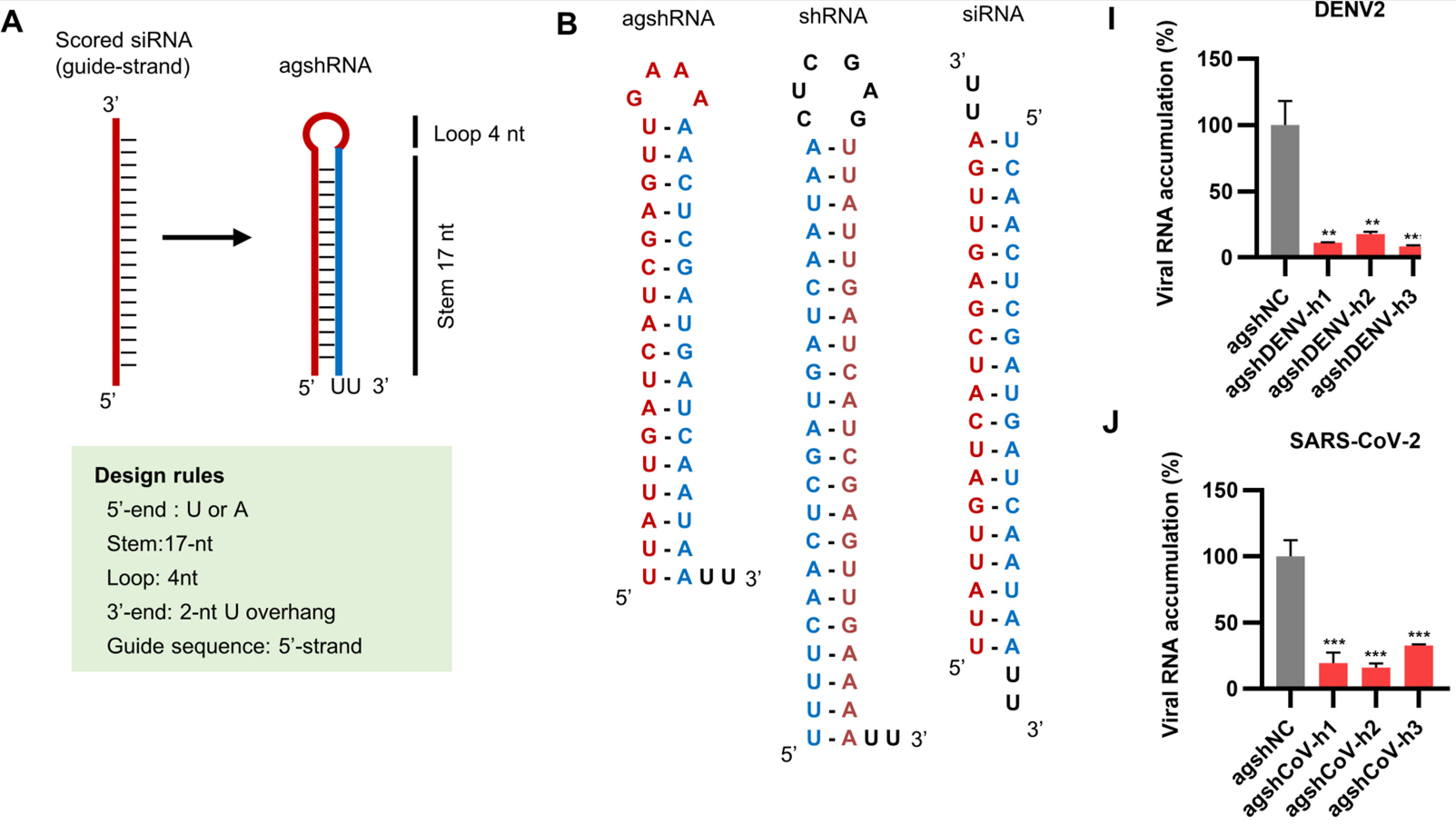-
Alsing, S., Doktor, T. K., Askou, A. L., Jensen, E. G., Ahmadov, U., Kristensen, L. S., Andresen, B. S., Aagaard, L., Corydon, T. J. 2022. Vegfa-targeting mir-agshrnas combine efficacy with specificity and safety for retinal gene therapy. Mol Ther Nucleic Acids, 28: 58-76.
-
Anobile, D. P., Poirier, E. Z. 2023. Rna interference, an emerging component of antiviral immunity in mammals. Biochem Soc Trans, 51: 137-146.
-
Bartel, D. P. 2018. Metazoan micrornas. Cell, 173: 20-51.
-
Birmingham, A., Anderson, E. M., Reynolds, A., Ilsley-Tyree, D., Leake, D., Fedorov, Y., Baskerville, S., Maksimova, E., Robinson, K., Karpilow, J., Marshall, W. S., Khvorova, A. 2006. 3' utr seed matches, but not overall identity, are associated with rnai off-targets. Nat Methods, 3: 199-204.
-
Bogerd, H. P., Whisnant, A. W., Kennedy, E. M., Flores, O., Cullen, B. R. 2014. Derivation and characterization of dicer- and microrna-deficient human cells. Rna, 20: 923-937.
-
Caillaud, M., El Madani, M., Massaad-Massade, L. 2020. Small interfering rna from the lab discovery to patients' recovery. J Control Release, 321: 616-628.
-
Cheloufi, S., Dos Santos, C. O., Chong, M. M., Hannon, G. J. 2010. A dicer-independent mirna biogenesis pathway that requires ago catalysis. Nature, 465: 584-589.
-
Choi, J. H., Croyle, M. A. 2013. Emerging targets and novel approaches to ebola virus prophylaxis and treatment. BioDrugs, 27: 565-583.
-
Cifuentes, D., Xue, H., Taylor, D. W., Patnode, H., Mishima, Y., Cheloufi, S., Ma, E., Mane, S., Hannon, G. J., Lawson, N. D., Wolfe, S. A., Giraldez, A. J. 2010. A novel mirna processing pathway independent of dicer requires argonaute2 catalytic activity. Science, 328: 1694-1698.
-
Davidson, B. L., McCray, P. B., Jr. 2011. Current prospects for rna interference-based therapies. Nat Rev Genet, 12: 329-340.
-
DeVincenzo, J., Lambkin-Williams, R., Wilkinson, T., Cehelsky, J., Nochur, S., Walsh, E., Meyers, R., Gollob, J., Vaishnaw, A. 2010. A randomized, double-blind, placebo-controlled study of an rnai-based therapy directed against respiratory syncytial virus. Proc Natl Acad Sci U S A, 107: 8800-8805.
-
Fang, Y., Liu, Z., Qiu, Y., Kong, J., Fu, Y., Liu, Y., Wang, C., Quan, J., Wang, Q., Xu, W., Yin, L., Cui, J., Xu, Y., Curry, S., Jiang, S., Lu, L., Zhou, X. 2021. Inhibition of viral suppressor of rnai proteins by designer peptides protects from enteroviral infection in vivo. Immunity, 54: 2231-2244.e2236.
-
Gao, Z., Berkhout, B., Herrera-Carrillo, E. 2019. Boosting agoshrna activity by optimized 5'-terminal nucleotide selection. RNA Biol, 16: 890-898.
-
Gebert, L. F., Rebhan, M. A., Crivelli, S. E., Denzler, R., Stoffel, M., Hall, J. 2014. Miravirsen (spc3649) can inhibit the biogenesis of mir-122. Nucleic Acids Res, 42: 609-621.
-
Ghildiyal, M., Zamore, P. D. 2009. Small silencing rnas: An expanding universe. Nat Rev Genet, 10: 94-108.
-
Gish, R. G., Satishchandran, C., Young, M., Pachuk, C. 2011. Rna interference and its potential applications to chronic hbv treatment: Results of a phase i safety and tolerability study. Antivir Ther, 16: 547-554.
-
Grimm, D., Wang, L., Lee, J. S., Schurmann, N., Gu, S., Borner, K., Storm, T. A., Kay, M. A. 2010. Argonaute proteins are key determinants of rnai efficacy, toxicity, and persistence in the adult mouse liver. J Clin Invest, 120: 3106-3119.
-
Grimm, D., Streetz, K. L., Jopling, C. L., Storm, T. A., Pandey, K., Davis, C. R., Marion, P., Salazar, F., Kay, M. A. 2006. Fatality in mice due to oversaturation of cellular microrna/short hairpin rna pathways. Nature, 441: 537-541.
-
Ha, M., Kim, V. N. 2014. Regulation of microrna biogenesis. Nat Rev Mol Cell Biol, 15: 509-524.
-
Herrera-Carrillo, E., Berkhout, B. 2017. Dicer-independent processing of small rna duplexes: Mechanistic insights and applications. Nucleic Acids Res, 45: 10369-10379.
-
Herrera-Carrillo, E., Harwig, A., Berkhout, B. 2015. Toward optimization of agoshrna molecules that use a non-canonical rnai pathway: Variations in the top and bottom base pairs. RNA Biol, 12: 447-456.
-
Herrera-Carrillo, E., Harwig, A., Berkhout, B. 2017a. Silencing of hiv-1 by agoshrna molecules. Gene Ther, 24: 453-461.
-
Herrera-Carrillo, E., Gao, Z., Berkhout, B. 2019. Influence of a 3' terminal ribozyme on agoshrna biogenesis and activity. Mol Ther Nucleic Acids, 16: 452-462.
-
Herrera-Carrillo, E., Gao, Z. L., Harwig, A., Heemskerk, M. T., Berkhout, B. 2017b. The influence of the 5'-terminal nucleotide on agoshrna activity and biogenesis: Importance of the polymerase iii transcription initiation site. Nucleic Acids Res, 45: 4036-4050.
-
Hu, B., Zhong, L., Weng, Y., Peng, L., Huang, Y., Zhao, Y., Liang, X. J. 2020. Therapeutic sirna: State of the art. Signal Transduct Target Ther, 5: 101.
-
Huesken, D., Lange, J., Mickanin, C., Weiler, J., Asselbergs, F., Warner, J., Meloon, B., Engel, S., Rosenberg, A., Cohen, D., Labow, M., Reinhardt, M., Natt, F., Hall, J. 2005. Design of a genome-wide sirna library using an artificial neural network. Nat Biotechnol, 23: 995-1001.
-
Huntzinger, E., Izaurralde, E. 2011. Gene silencing by micrornas: Contributions of translational repression and mrna decay. Nat Rev Genet, 12: 99-110.
-
Ichihara, M., Murakumo, Y., Masuda, A., Matsuura, T., Asai, N., Jijiwa, M., Ishida, M., Shinmi, J., Yatsuya, H., Qiao, S., Takahashi, M., Ohno, K. 2007. Thermodynamic instability of sirna duplex is a prerequisite for dependable prediction of sirna activities. Nucleic Acids Res, 35: e123.
-
Jackson, A. L., Bartz, S. R., Schelter, J., Kobayashi, S. V., Burchard, J., Mao, M., Li, B., Cavet, G., Linsley, P. S. 2003. Expression profiling reveals off-target gene regulation by rnai. Nat Biotechnol, 21: 635-637.
-
Knott, S. R. V., Maceli, A., Erard, N., Chang, K., Marran, K., Zhou, X., Gordon, A., Demerdash, O. E., Wagenblast, E., Kim, S., Fellmann, C., Hannon, G. J. 2014. A computational algorithm to predict shrna potency. Mol Cell, 56: 796-807.
-
Kong, J., Bie, Y., Ji, W., Xu, J., Lyu, B., Xiong, X., Qiu, Y., Zhou, X. 2023. Alphavirus infection triggers antiviral rnai immunity in mammals. Cell Rep, 42: 112441.
-
Lisowiec-Wachnicka, J., Bartys, N., Pasternak, A. 2019. A systematic study on the influence of thermodynamic asymmetry of 5'-ends of sirna duplexes in relation to their silencing potency. Sci Rep, 9: 2477.
-
Liu, Y. P., Schopman, N. C., Berkhout, B. 2013. Dicer-independent processing of short hairpin rnas. Nucleic Acids Res, 41: 3723-3733.
-
Liu, Y. P., Karg, M., Harwig, A., Herrera-Carrillo, E., Jongejan, A., van Kampen, A., Berkhout, B. 2015. Mechanistic insights on the dicer-independent ago2-mediated processing of agoshrnas. RNA Biol, 12: 92-100.
-
Lyu, B., Wang, C., Bie, Y., Kong, J., Wang, A., Jin, L., Qiu, Y., Zhou, X. 2022. Enoxacin shows broad-spectrum antiviral activity against diverse viruses by enhancing antiviral rna interference in insects. J Virol, 96: e0177821.
-
Marino, N. D., Pinilla-Redondo, R., Csorgő, B., Bondy-Denomy, J. 2020. Anti-crispr protein applications: Natural brakes for crispr-cas technologies. Nat Methods, 17: 471-479.
-
Pelossof, R., Fairchild, L., Huang, C. H., Widmer, C., Sreedharan, V. T., Sinha, N., Lai, D. Y., Guan, Y., Premsrirut, P. K., Tschaharganeh, D. F., Hoffmann, T., Thapar, V., Xiang, Q., Garippa, R. J., Ratsch, G., Zuber, J., Lowe, S. W., Leslie, C. S., Fellmann, C. 2017. Prediction of potent shrnas with a sequential classification algorithm. Nat Biotechnol, 35: 350-353.
-
Reynolds, A., Leake, D., Boese, Q., Scaringe, S., Marshall, W. S., Khvorova, A. 2004. Rational sirna design for rna interference. Nat Biotechnol, 22: 326-330.
-
Schierhorn, K. L., Sanchez-David, R. Y., Maillard, P. V. 2022. Mammalian antiviral rnai is on the move. Embo j, 41: e111210.
-
Shabalina, S. A., Spiridonov, A. N., Ogurtsov, A. Y. 2006. Computational models with thermodynamic and composition features improve sirna design. BMC Bioinformatics, 7: 65.
-
Shang, R., Zhang, F., Xu, B., Xi, H., Zhang, X., Wang, W., Wu, L. 2015. Ribozyme-enhanced single-stranded ago2-processed interfering rna triggers efficient gene silencing with fewer off-target effects. Nat Commun, 6: 8430.
-
Skowronski, D. M., De Serres, G. 2021. Safety and efficacy of the bnt162b2 mrna covid-19 vaccine. N Engl J Med, 384: 1576-1577.
-
Sommer, C., Gerlich, D. W. 2013. Machine learning in cell biology - teaching computers to recognize phenotypes. J Cell Sci, 126: 5529-5539.
-
Vert, J. P., Foveau, N., Lajaunie, C., Vandenbrouck, Y. 2006. An accurate and interpretable model for sirna efficacy prediction. BMC Bioinformatics, 7: 520.
-
Wang, C., Li, X., Ning, W., Gong, S., Yang, F., Fang, C., Gong, Y., Wu, D., Huang, M., Gou, Y., Fu, S., Ren, Y., Yang, R., Qiu, Y., Xue, Y., Xu, Y., Zhou, X. 2021. Multi-omic profiling of plasma reveals molecular alterations in children with covid-19. Theranostics, 11: 8008-8026.
-
Wittrup, A., Lieberman, J. 2015. Knocking down disease: A progress report on sirna therapeutics. Nat Rev Genet, 16: 543-552.
-
Wu, L., Belasco, J. G. 2008. Let me count the ways: Mechanisms of gene regulation by mirnas and sirnas. Mol Cell, 29: 1-7.
-
Xie, Y., Yin, W., Zhang, Y., Shang, W., Wang, Z., Luan, X., Tian, G., Aisa, H. A., Xu, Y., Xiao, G., Li, J., Jiang, H., Zhang, S., Zhang, L., Xu, H. E., Shen, J. 2021. Design and development of an oral remdesivir derivative vv116 against sars-cov-2. Cell Res, 31: 1212-1214.
-
Yang, J. S., Maurin, T., Robine, N., Rasmussen, K. D., Jeffrey, K. L., Chandwani, R., Papapetrou, E. P., Sadelain, M., O'Carroll, D., Lai, E. C. 2010. Conserved vertebrate mir-451 provides a platform for dicer-independent, ago2-mediated microrna biogenesis. Proc Natl Acad Sci U S A, 107: 15163-15168.
-
Yoda, M., Cifuentes, D., Izumi, N., Sakaguchi, Y., Suzuki, T., Giraldez, A. J., Tomari, Y. 2013. Poly(a)-specific ribonuclease mediates 3'-end trimming of argonaute2-cleaved precursor micrornas. Cell Rep, 5: 715-726.
-
Zhang, Z., Liu, Q., Sun, Y., Li, J., Liu, J., Pan, R., Cao, L., Chen, X., Li, Y., Zhang, Y., Xu, K., Guo, D., Zhou, L., Lan, K., Chen, Y. 2021. Live attenuated coronavirus vaccines deficient in n7-methyltransferase activity induce both humoral and cellular immune responses in mice. Emerg Microbes Infect, 10: 1626-1637.














 DownLoad:
DownLoad: